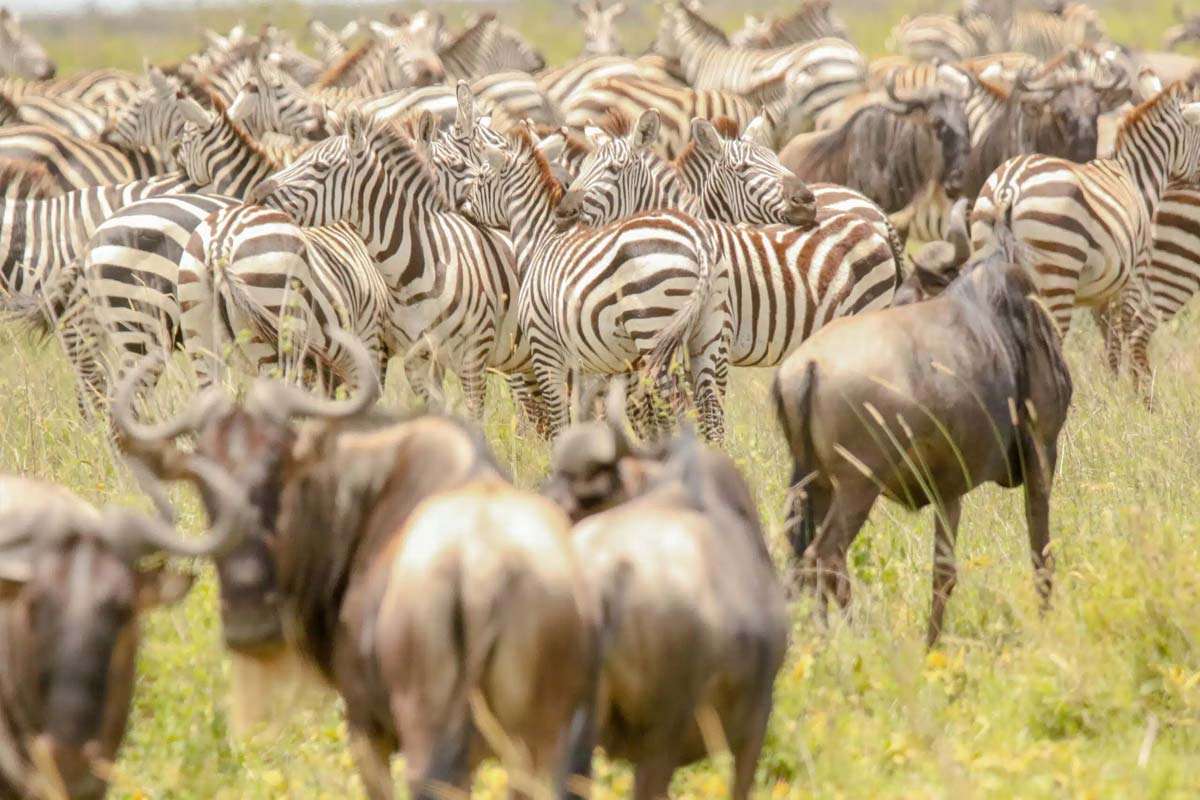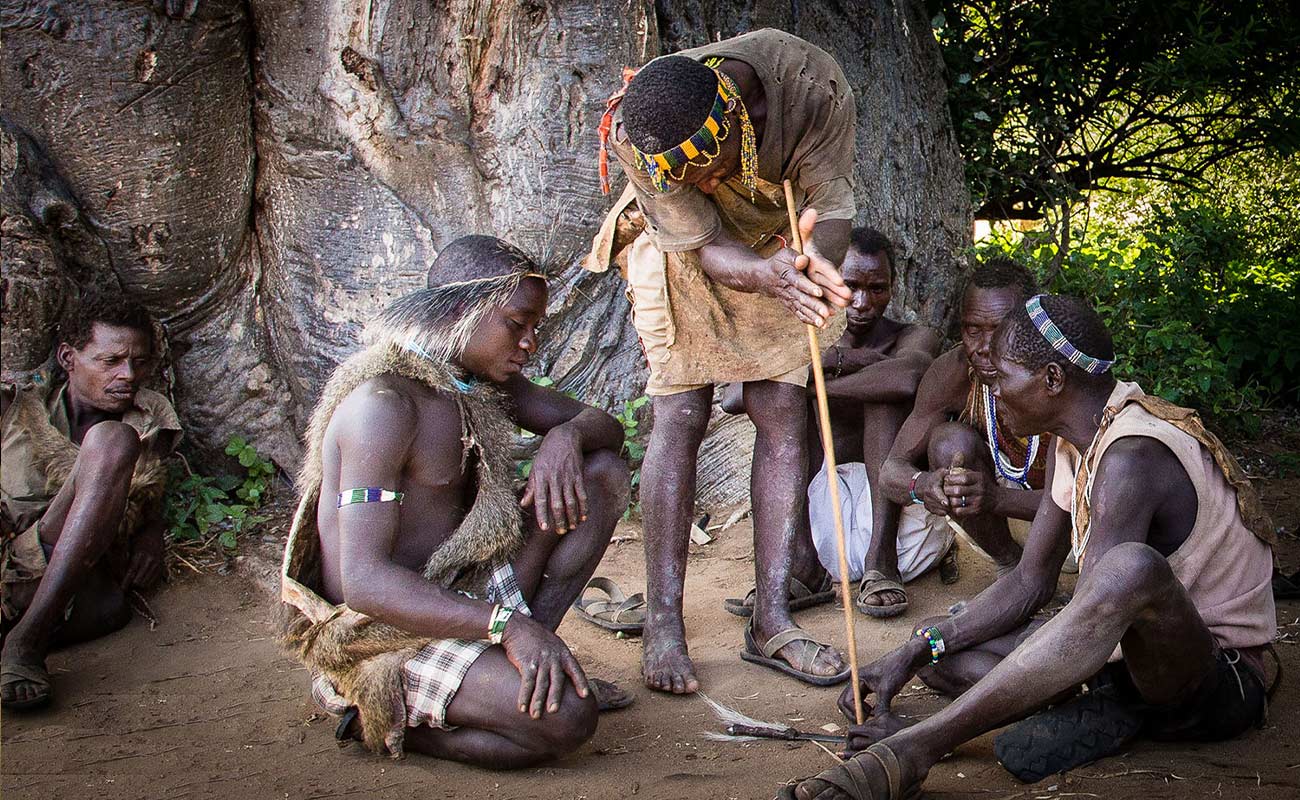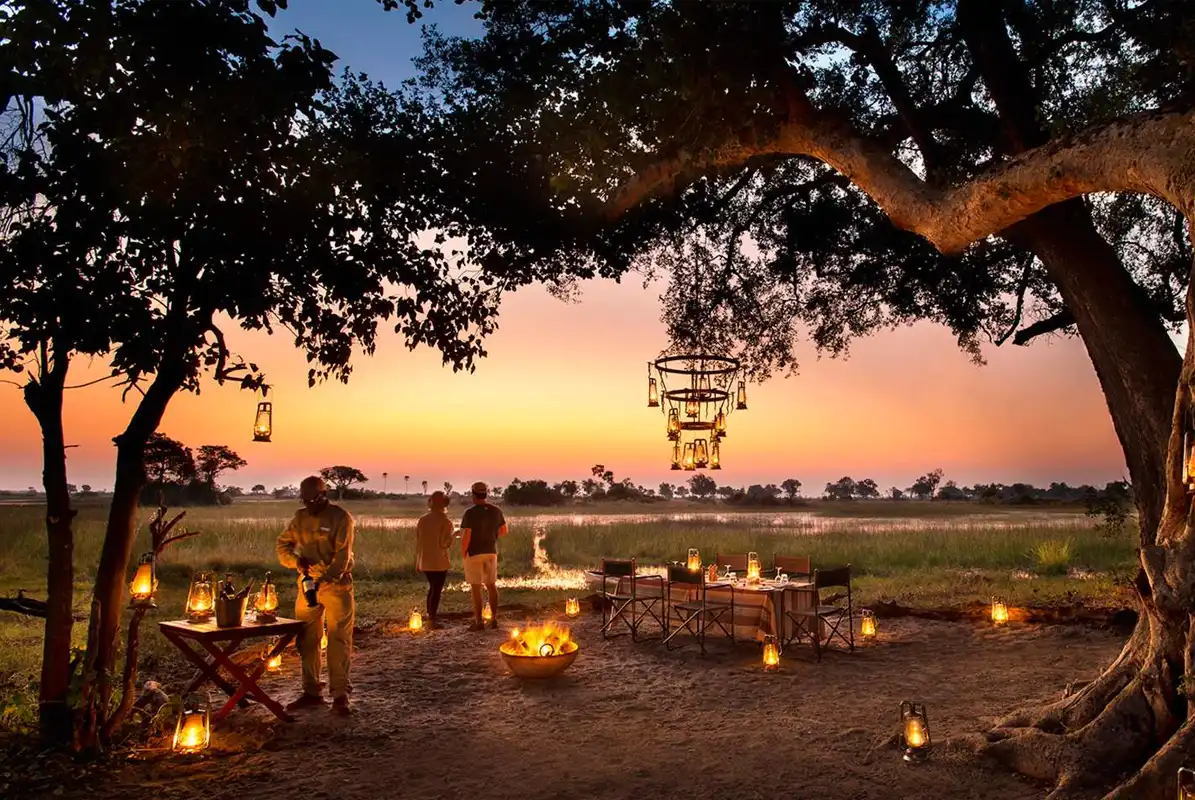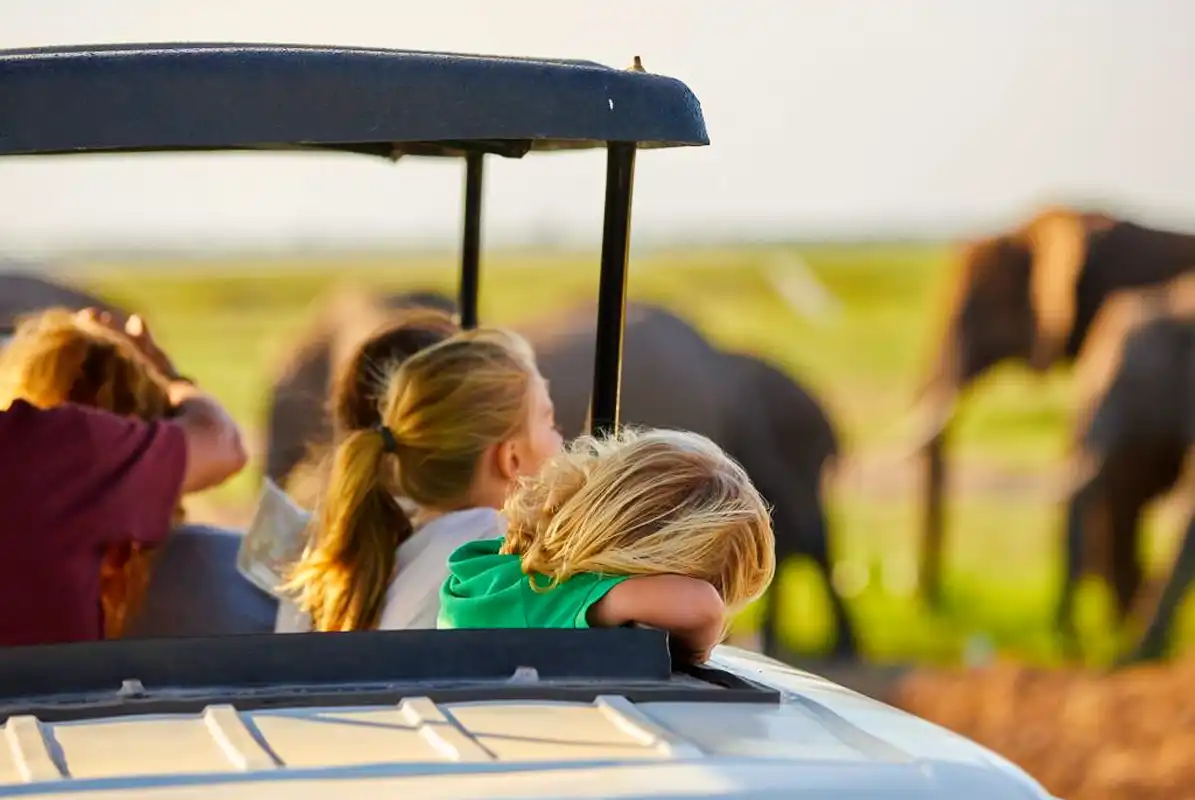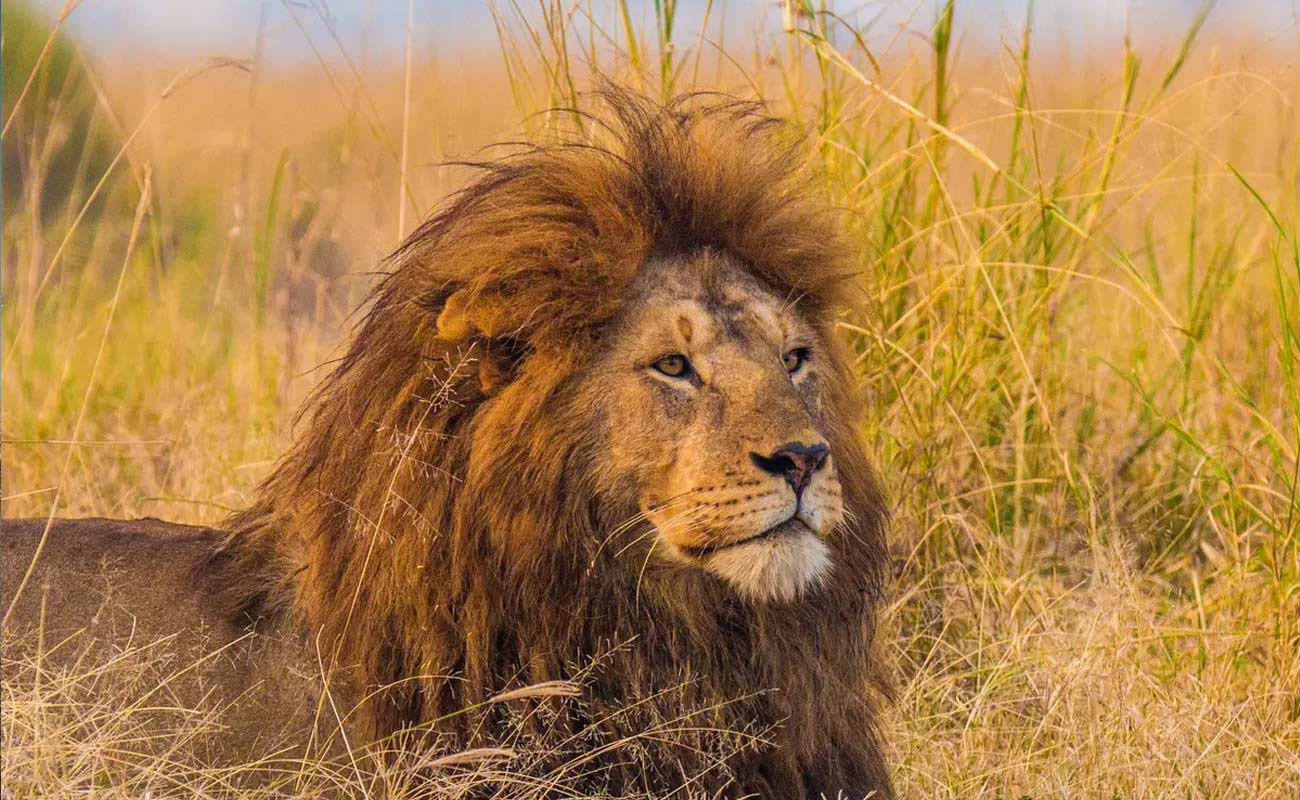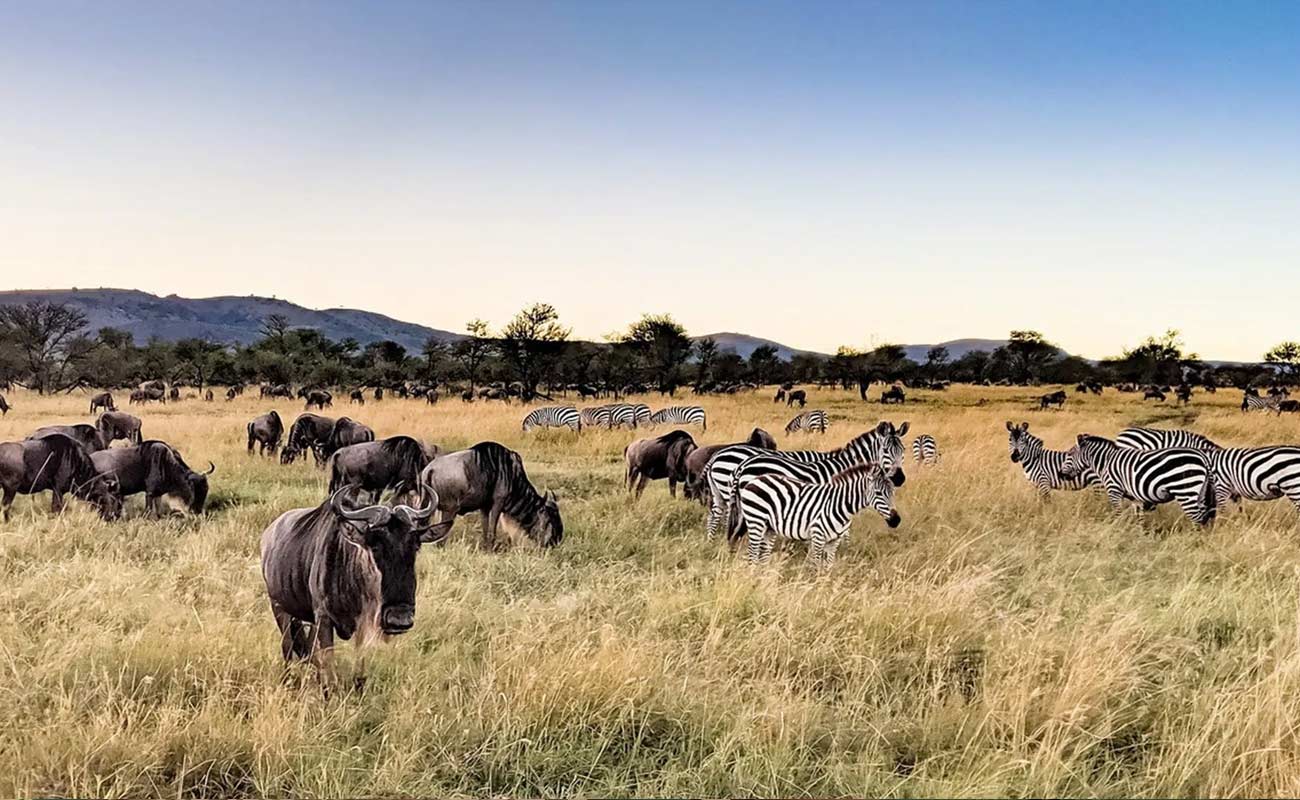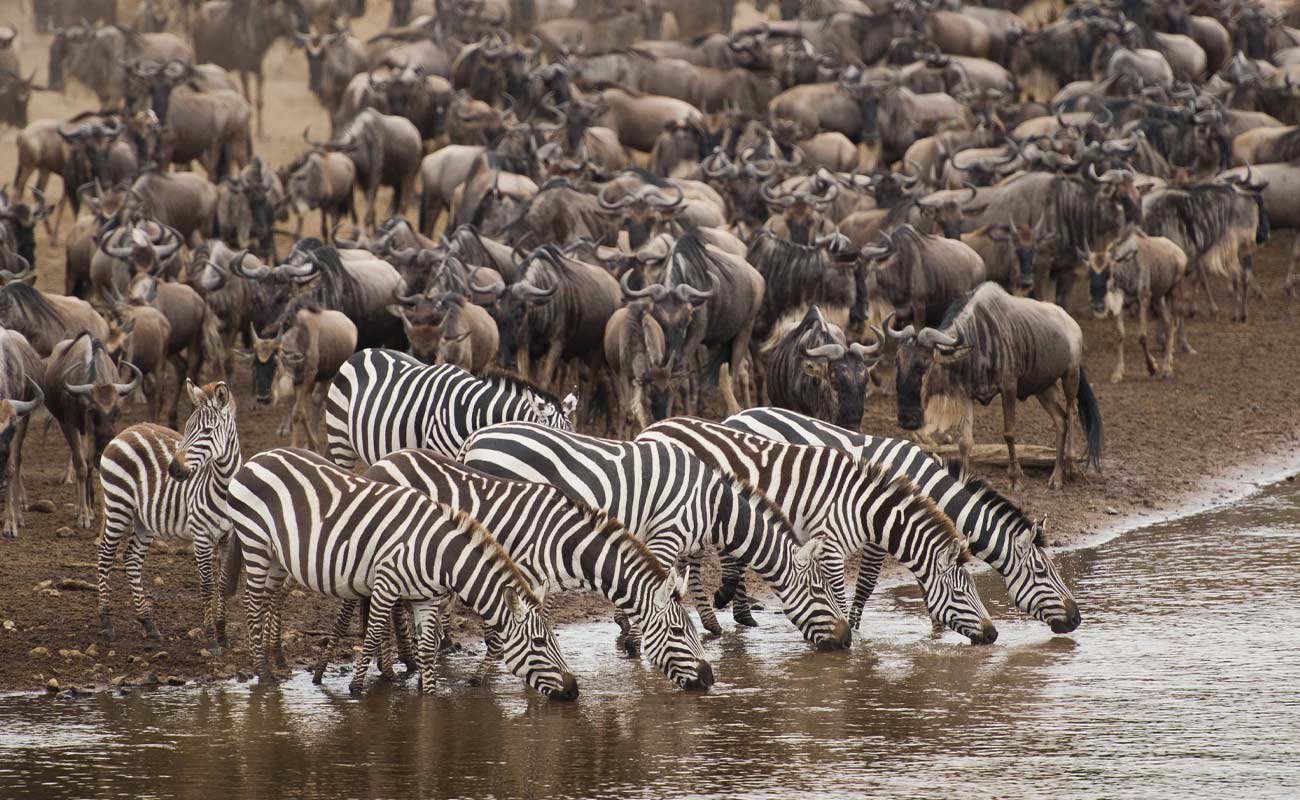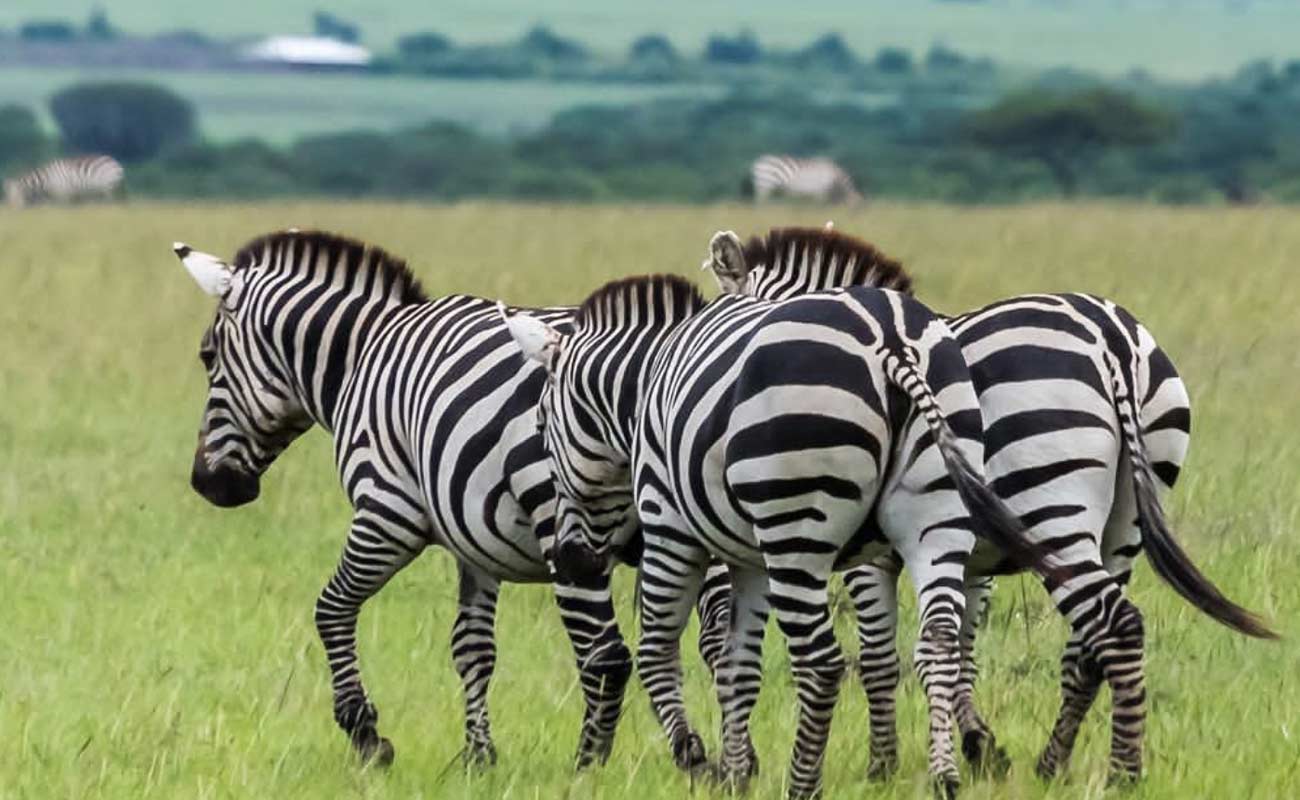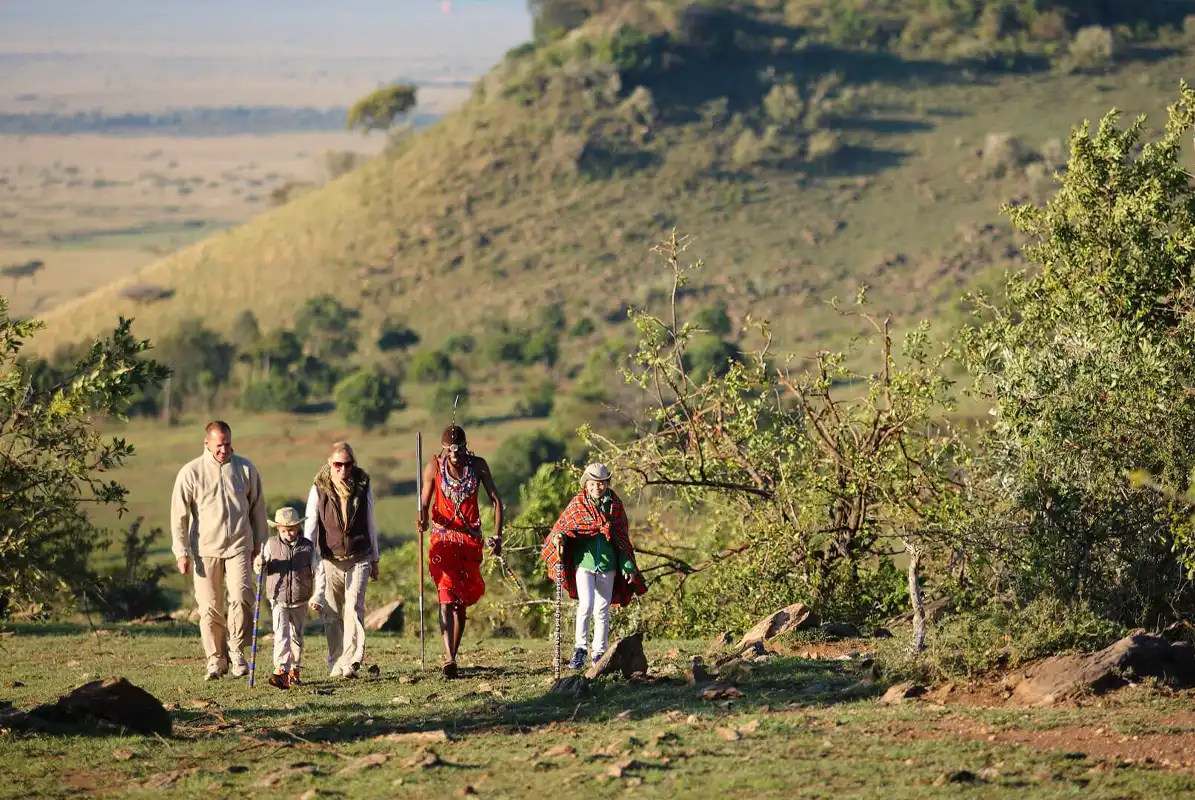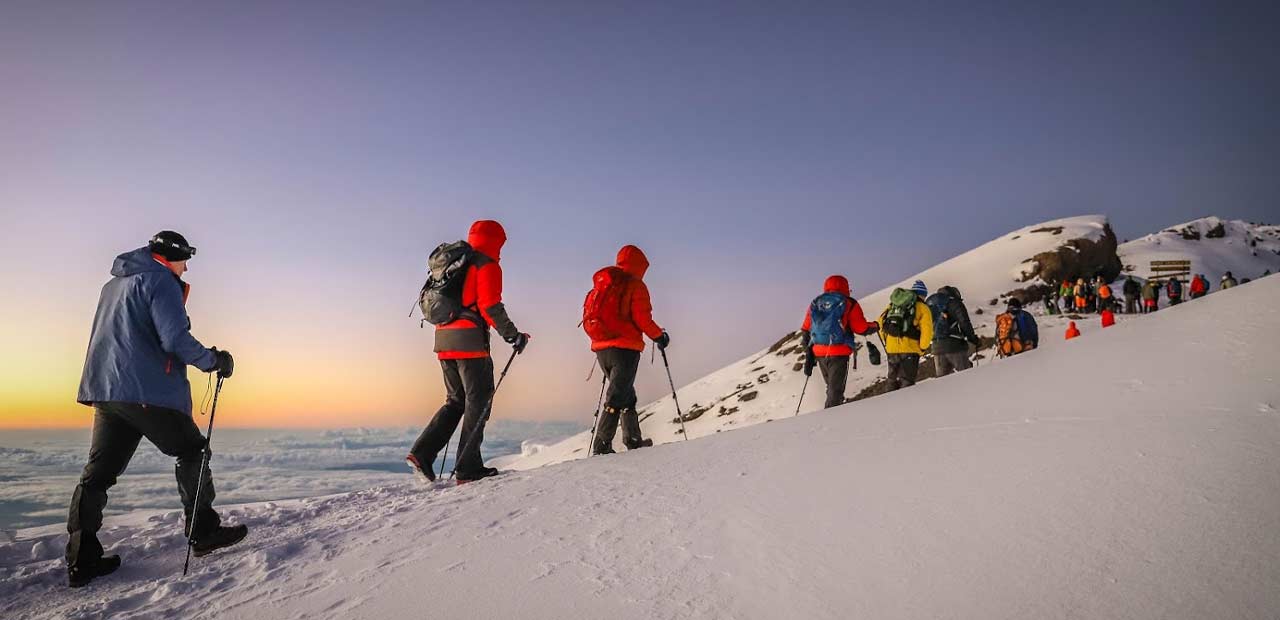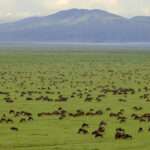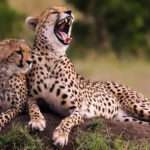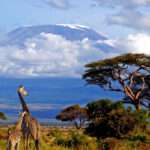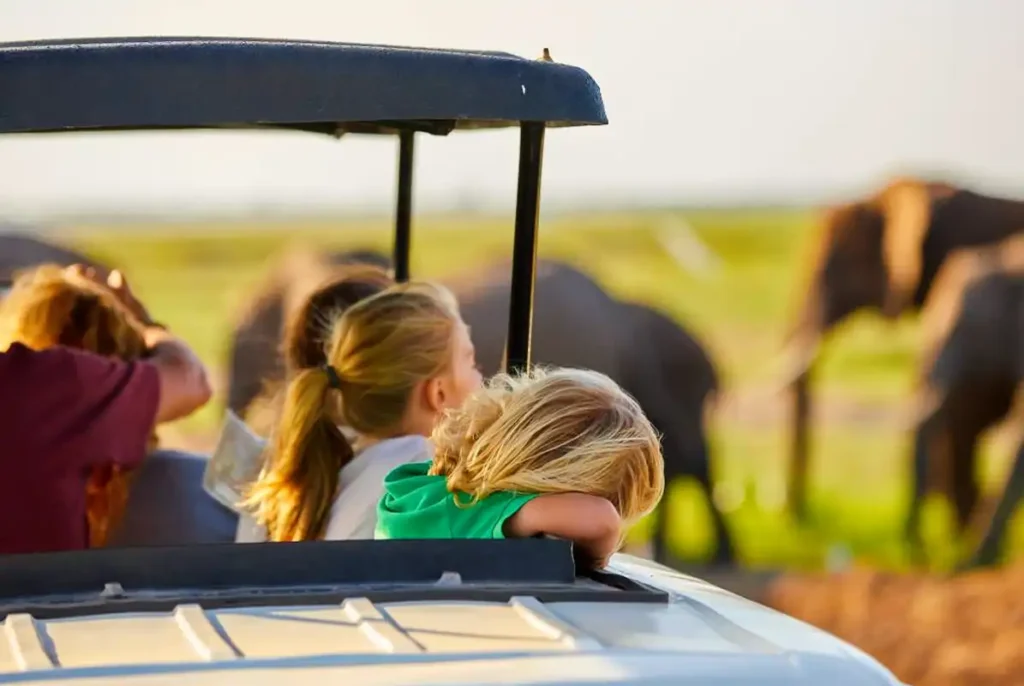What Wildlife will I see on safari Holidays in Tanzania?
Tanzania, the largest country in East Africa, boasts an abundance of natural wonders, especially during Safari Holidays. With more wildlife per square mile than anywhere else, it’s a realm of astonishing biodiversity where safari enthusiasts can witness the beauty of nature up close. Words fail to capture its grandeur; eyes widen, and hearts race in this unparalleled landscape, making Safari Holidays in Tanzania an unforgettable adventure.
Experience the extraordinary in Tanzania. From encountering the iconic Big Five to witnessing the mesmerizing migrations, Tanzania’s wildlife takes center stage in the African wilderness. The country beckons, offering a once-in-a-lifetime opportunity to marvel at its magnificence. So, let’s embark on our exceptional Tanzania Safari Holidays together and immerse ourselves in the iconic wildlife in the lap of nature!
Big Stars: The Majestic Animals of Tanzania
Tanzania’s vast landscapes are the majestic habitats of some of the planet’s most iconic animals. These magnificent beings epitomize the untamed beauty of the region:
African Elephants:
African Elephants, the gentle giants of the savannah, are renowned for their imposing size and complex social behavior.
These magnificent creatures are voracious eaters, consuming between 300 to 500 pounds of food daily. Despite their poor eyesight, their large brains compensate for this deficiency.
However, their colossal size also makes them potentially dangerous. When threatened, they can charge at speeds of up to 30 miles per hour, showcasing their formidable power.
Lions:
African Lions, renowned for their social nature, often form groups known as prides. Despite being the second-largest cat after the Tiger, their majestic presence dominates the savannah.
Their thunderous roar can travel up to 8 kilometers, announcing their territory, which can span an impressive 260 square kilometers.
Distinguished by their impressive manes, lions showcase a unique feature among big cats. While lionesses are primarily responsible for hunting and caring for the young, males play a crucial role in guarding the pride’s territory.
African Buffaloes:
African Buffaloes, formidable herbivores, roam the grasslands and forests of Tanzania in vast herds, finding safety in numbers.
Their distinctive curved horns serve as potent weapons against predators, allowing them to defend themselves effectively.
Beyond their role as grazers, buffaloes play a crucial role in maintaining the balance of the ecosystem by shaping vegetation through their grazing habits.
Despite their imposing stature, these animals possess surprising agility and speed when faced with danger, making them a force to be reckoned with in the African wilderness.
Leopards:
Leopards, with their striking spotted coat, are enigmatic predators of the wild, renowned for their exceptional climbing and swimming abilities.
As solitary hunters, they excel in stealth, relying on their keen senses to execute precise night-time hunts with remarkable efficiency.
Adaptability is a hallmark of leopards, as they inhabit a wide range of habitats across Africa, showcasing their strength, agility, and elusive nature in diverse environments.
Indeed, leopards stand as a testament to the marvels of the animal kingdom, embodying grace and power in equal measure.
Rhinoceroses:
Rhinoceroses, or rhinos, are majestic yet endangered creatures characterized by their large size, formidable strength, and distinctive horns.
Tragically, these horns have made them targets of relentless poaching, driving them to the brink of extinction.
Despite their solitary nature, rhinos play a vital role in their ecosystems, often found grazing in grasslands and contributing to biodiversity.
Efforts in conservation strive to safeguard these magnificent animals and secure their future in the wild, underscoring the urgent need for preservation and protection.
Epic Journey: The Great Migration in Action
The Great Wildebeest Migration stands as one of nature’s most awe-inspiring spectacles, unfolding across the plains of Tanzania.
Here, hundreds of thousands of wildebeests and zebras embark on an epic journey in search of greener pastures, painting the landscape with a mesmerizing display of movement and energy.
Yet, this migration is not without its perils. River crossings, fraught with lurking crocodiles, pose daunting challenges to the migrating herds. Predators and scavengers shadow their path, adding a thrilling layer of drama to this extraordinary cycle of life and survival.
The Main Figures On a Tanzania Safar
Embarking on a Tanzania Safari Holiday unveils a mesmerizing ensemble of creatures that define the essence of the African wilderness. Each of these remarkable beings possesses unique traits, contributing to the rich tapestry of wildlife encounters:
1. Cheetahs – Speed and Stealth in Action:
Cheetahs epitomize nature’s sprinters, renowned for their incredible speed.
Solitary hunters, gracefully stalk their prey before launching into a high-speed chase.
2. African Wild Dogs – Pack Predators of the Savannah
African wild dogs, also known as painted wolves, exhibit a remarkable social structure.
They function as a coordinated pack, relying on teamwork for successful hunts.
3. Giraffes – Graceful Giants of the Savannah:
Giraffes stand tall as the gentle giants of the savannah.
With their elongated necks and striking patterns, they effortlessly reach leaves high in the trees.
4. Hippos – Aquatic Giants of Rivers and Lakes:
Despite their seemingly docile appearance in the water, hippos are among the most dangerous animals in Africa due to their massive size and territorial nature.
5. Hyenas: Nature’s Clever Scavengers:
Living in complex clans, hyenas are clever scavengers found in Tanzania’s wilderness.
Their unique physique, scavenging prowess, and adaptability define their crucial role in the ecosystem.
Winged Wonders: Birds on Tanzania Safaris
Tanzania’s skies are adorned with an incredible variety of avian life, adding colors and charm to the landscape:
1. Flamingos: Flocks of vibrant pink in saline lakes create a stunning visual spectacle, painting the horizon with their graceful presence.
2. Fish Eagles: Their majestic calls resonate across water bodies, echoing the untamed spirit of the wilderness and adding a melodious soundtrack to the natural symphony.
3. Secretary Birds: Unique predators of the grasslands, these birds are known for their distinctive appearance and striking hunting prowess, symbolizing the diverse and fascinating wildlife of Tanzania.
Water Lovers: Aquatic Animals in Tanzania
Tanzania’s vibrant ecosystems extend beyond land, revealing a captivating world of aquatic life. These water species, adapted to river and lake habitats, thrive in their watery realms:
1. Hippos: Despite their lumbering appearance on land, hippos are surprisingly agile in the water. These massive creatures spend most of their time submerged, emerging at night to graze on land, showcasing their dual existence between water and land.
2. Nile Crocodiles: Commanding respect as apex predators in Tanzania’s waterways, Nile crocodiles are masters of stealth and possess powerful jaws, making them formidable hunters in their aquatic domain.
3. Waterbirds: Flourishing in Tanzania’s lakes and rivers, water-loving birds add grace and beauty to the aquatic landscapes. From the stunning pink plumage of flamingos creating breathtaking sights in saline lakes to the majestic presence of fish eagles soaring above water bodies, each species contributes to the rich tapestry of aquatic life in Tanzania.
Exploring Tanzania’s aquatic habitats provides a glimpse into the remarkable adaptations of these creatures to their unique environments, offering a deeper understanding of the intricate balance of life in the water.
Best Time: When Animals Are Active
Timing is key to witnessing the magic of Tanzania Wildlife:
1. Dry season (June to October): This period is ideal for game viewing as animals congregate around water sources due to the scarcity of water in other areas. The dry season offers excellent visibility, making it easier to spot wildlife in the savannah plains.
2. Calving season (January to February): During this period, witness the awe-inspiring spectacle of the birthing season for wildebeests and zebras. The vast herds of migrating animals give birth to their young in the southern Serengeti, creating a dramatic natural event as predators lurk nearby, waiting for opportunities to hunt vulnerable newborns.
Top Picks: Must-Visit National Parks in Tanzania
To immerse yourself in this wildlife wonderland, venture into these premier Tanzania National Parks:
| National Park | Highlights |
| Serengeti National Park | Great Migration, Big Five |
| Ngorongoro Crater | Dense Wildlife Population, Crater views |
| Tarangire National Park | Elephant herds, Baobab trees |
| Lake Manyara National Park | Flamingo-filled lake, diverse birdlife |
Answer Tanzania’s Wild Call – Adventure Awaits Your Presence.
As we draw the curtain on the wonders of Tanzania’s Wildlife, it’s important to recognize that the narrative extends far beyond these pages. The untamed essence of this land, teeming with its diverse array of creatures, beckons you to become a part of its ongoing story. In Tanzania Safari Holidays, every rustle in the grass, every distant roar, carries with it a promise of adventure and wonder.


